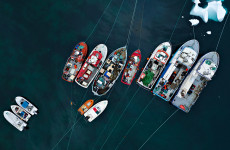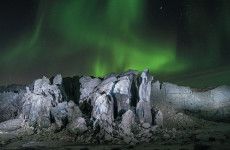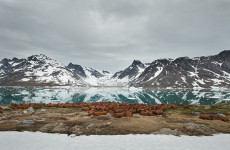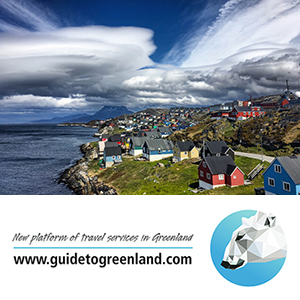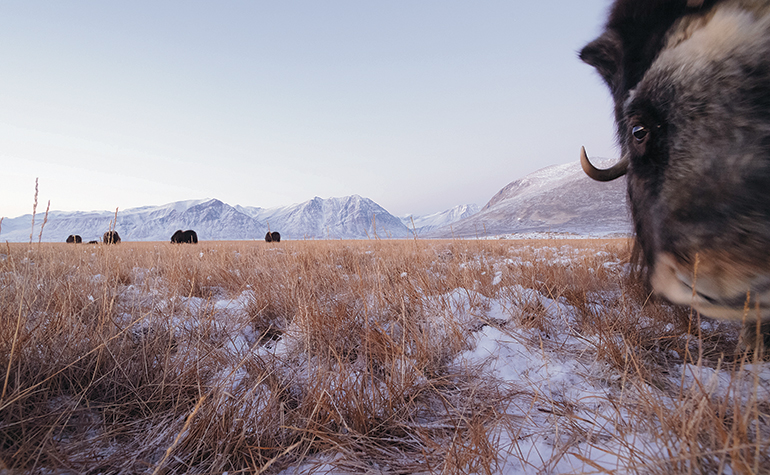
It was not the intention to attract the musk-oxen, because Lars Holst Hansen prefers photos of animals that are uninfluenced. The photo here was published as a postcard in 2013.
It requires both patience and technical expertise to »trap« the animals on the east coast of Greenland
Text: greenland today, Photo: Lars Holst Hansen, greenland today November 2016
Between 1908 and 1960, Arctic foxes were trapped and other animals such as polar bears and musk-oxen in Northeast Greenland were shot by Danish hunters and by Norwegian hunters in particular. The establishment of a national park in 1974 marked the end of hunting and trapping in this huge area. Today, trapping and shooting of animals is again taking place at the Zackenberg Research station, but now with photo traps and cameras.
– Since 2007 I have worked as a field biologist and from 2009 also as deputy scientific director at Zackenberg, says Lars Holst Hansen.
– My primary work is to monitor the biological part of the ecosystem and to undertake the local management of the research station with the logisticians.
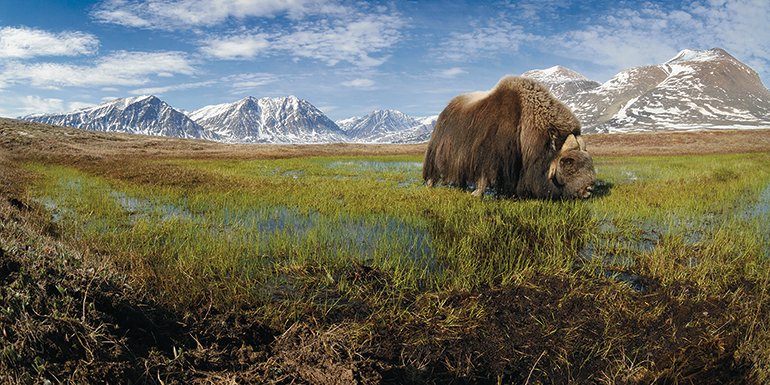 Lars Holst Hansen’s first attempt with a photo trap. The photo was runner up in the Mammal Category in a major Nordic nature photography competition in 2012 and in 2013 Greenland’s postal services issued a postage stamp with this motif.
Lars Holst Hansen’s first attempt with a photo trap. The photo was runner up in the Mammal Category in a major Nordic nature photography competition in 2012 and in 2013 Greenland’s postal services issued a postage stamp with this motif.
Nature photography
– Nature photography is my great passion and staying in one place for longer periods in one of the world’s biggest wildernesses provides unique opportunities, says Lars.
– You can learn the habits of the individual animal and it gets an opportunity to become accustomed to you and find out you are harmless, letting you get relatively close. There are, however, limits to how close you can get for your own safety’s sake. Photo traps provide an opportunity to get a very close perspective of even potentially dangerous animals, without disturbing them.
– I see it as an opportunity to achieve photos that would otherwise be impossible or at least very difficult to obtain. It takes quite a lot of creative and technical consideration in order to succeed. It also requires a good amount of luck, but then that applies to most kinds of nature photography.
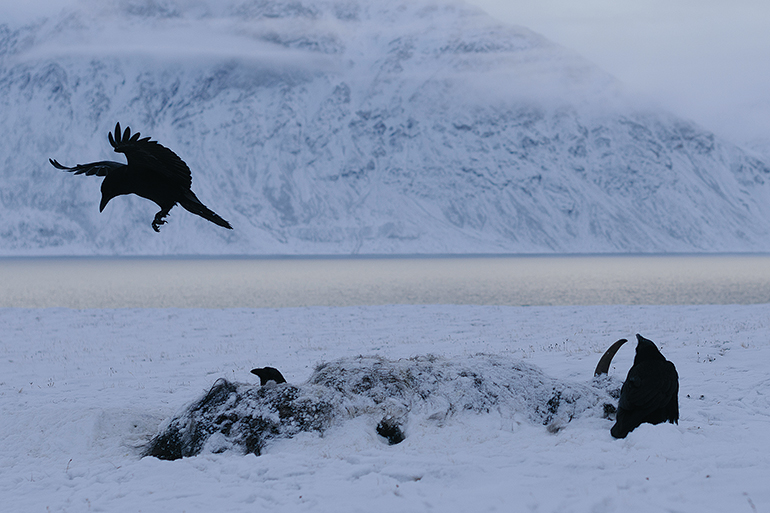 Even dead, the musk-oxen can actually make interesting motifs. In connection with counting musk-oxen in the field, Lars Holst Hansen saw this musk-ox bull. The fresh carcass attracted Arctic foxes and ravens and it was the obvious place for a photo trap. The ravens flew off as soon as he approached, but they soon got used to the trap.
Even dead, the musk-oxen can actually make interesting motifs. In connection with counting musk-oxen in the field, Lars Holst Hansen saw this musk-ox bull. The fresh carcass attracted Arctic foxes and ravens and it was the obvious place for a photo trap. The ravens flew off as soon as he approached, but they soon got used to the trap.
Photo traps
– In 2011, I took an infrared trigger to Greenland, planning to build a photo trap. I saw an obvious opportunity when some musk-oxen started to come to a small, temporary water hole in the middle of June. It was still early in the season and the water hole was just about the only lush green vegetation for miles around. Therefore, there was a good chance they would be there for a few days. I used a fish-eye lens to get a lot of the mountains in the background and at the same time get really close shots of the animals, explains Lars.
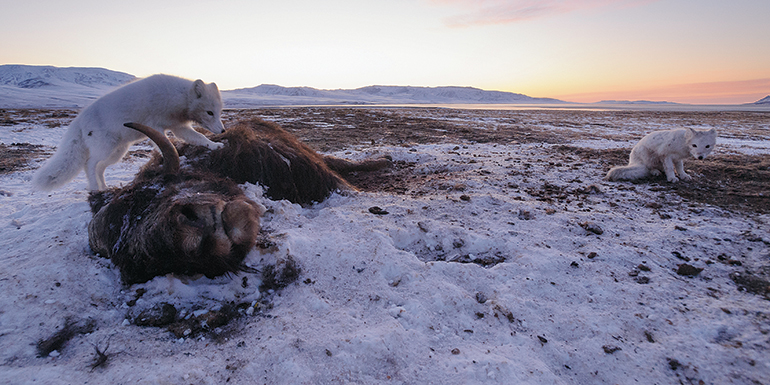 Instead of moving the carcass, Lars tried alternative angles. It was interesting to watch the slow decomposition of the carcass and it provided many good photos, both with and without the trap, because the foxes gradually became accustomed to his presence.
Instead of moving the carcass, Lars tried alternative angles. It was interesting to watch the slow decomposition of the carcass and it provided many good photos, both with and without the trap, because the foxes gradually became accustomed to his presence.
TECHNIQUES
Triggers are required for photo traps. Lars has passive infrared sensors (PIR) that detect movement. Active triggers, where a beam is broken, trip wires or pressure-sensitive mats can also be used. An active trigger provides greater control over when the photograph is taken, but there is also a risk that no picture is taken at all. Lars does not use any kind of bait above what is found naturally, such as carcasses, because he does not want to orchestrate anything. Some animals can, however, be drawn to the camera itself. External flashes are often used generally, but not so much in Northeast Greenland where the midnight sun shines for three months in the summer. A box is a good idea; it can protect the camera against the weather and especially from being knocked about by animals. For the most part, the camera is set on aperture priority auto with automatic ISO to cover as many light conditions as possible. A low, solid tripod or a homemade platform with a thread for a tripod head with quick coupling can be practical.
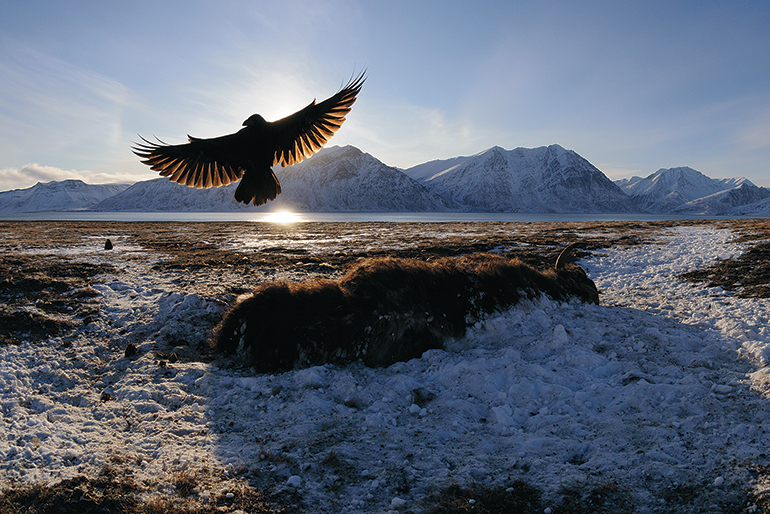 Lars Holst Hansen was very pleased with the background made by the mountains over on Clavering Island, but it was not possible to see it was a dead musk-ox from that angle. He could, of course, have moved the musk-ox, but Lars is resolute in his determination not to orchestrate anything in his nature photographs, so he let the musk-ox lie.
Lars Holst Hansen was very pleased with the background made by the mountains over on Clavering Island, but it was not possible to see it was a dead musk-ox from that angle. He could, of course, have moved the musk-ox, but Lars is resolute in his determination not to orchestrate anything in his nature photographs, so he let the musk-ox lie.
THE NATIONAL PARK
- Location: North and East Greenland – the world’s biggest park.
- Area: 970,000 km² of which approx. 200,000 km² is not covered by the ice cap.
- Established: 1974.
- Inhabitants: Approx. 20 military personnel at Station Nord, the Sirius Sled Patrol and Mestersvig Airfield and about eight people at the weather station at Danmarkshavn. In the summer, there are also researchers, logisticians, exploration teams and finally tourists; tourists on so-called sports expeditions, e.g. with kayaks and passengers on cruises.
- Nature: ice sheet, tundra, mountains, glaciers, lakes, rivers.
- Conservation: Nature is generally well-protected, but special permission is given to mineral exploration and exploitation. Limited hunting is permitted for ptarmigan, Arctic foxes and seals by permanent staff members of the station. Professional Greenlandic hunters may hunt polar bears. A recent dispensation given to the Sirius Sled Patrol to shoot six musk-oxen for training purposes has not been fully exploited due to consideration for research and surveillance in the national park.
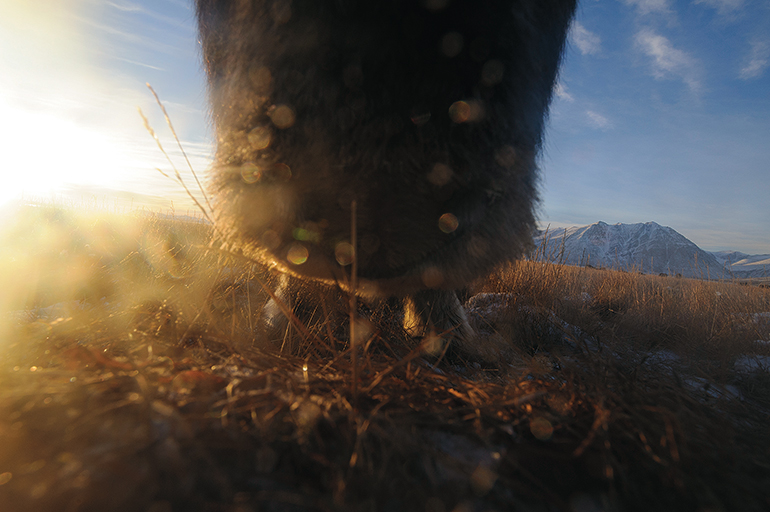 In 2012, Lars Holst Hansen brought a photo-robot – a radio-controlled, mobile camera platform – for close-ups of the musk-oxen with a wide-angle lens. However, the animals were afraid of it, so it was only tested once. Instead, the photo trap came into play again, this time in wetlands, where there are plenty of musk-oxen in the autumn.
In 2012, Lars Holst Hansen brought a photo-robot – a radio-controlled, mobile camera platform – for close-ups of the musk-oxen with a wide-angle lens. However, the animals were afraid of it, so it was only tested once. Instead, the photo trap came into play again, this time in wetlands, where there are plenty of musk-oxen in the autumn.
About the photographer
- Lars Holst Hansen
- Danish nature photographer, born in 1973
- Member of Nature Photographers in Denmark
- Field biologist and deputy scientific director at the Zackenberg Research Station in Northeast Greenland
- Since 2007, he has worked for Aarhus University in Denmark on monitoring the effects of climate change on the Arctic ecosystem at Zackenberg
- Freelance tour guide for tours to Greenland, Africa and the Galapagos Islands
- Lecturer
 Read the article from page 48
Read the article from page 48
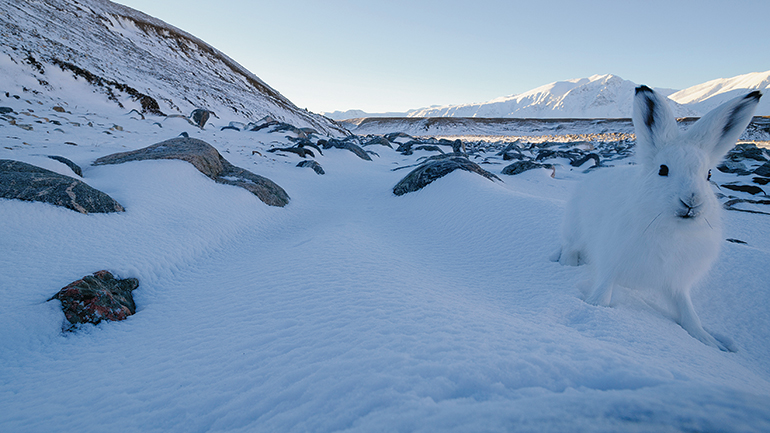 You do not always get the photo you hoped for. The trap was set up close to a river, where Lars had seen many fox tracks. How-ever, the fox stayed away, but this Arctic hare came by instead.
You do not always get the photo you hoped for. The trap was set up close to a river, where Lars had seen many fox tracks. How-ever, the fox stayed away, but this Arctic hare came by instead.
 In 2011, Lars saw how the foxes ate a musk-ox from the inside and one fox even used the hollow chest cavity to take a nap during a snowstorm. It awoke with surprise when Lars came to check on the photo trap. Later, Lars cut a hole in the opposite side of the foxes’ natural way into a fresh carcass, big enough for a protective box and a flash. The musk-ox was quite wind-dried and no longer of interest to the foxes, so the entire summer passed before a fox became interested in the carcass and poked its head inside.
In 2011, Lars saw how the foxes ate a musk-ox from the inside and one fox even used the hollow chest cavity to take a nap during a snowstorm. It awoke with surprise when Lars came to check on the photo trap. Later, Lars cut a hole in the opposite side of the foxes’ natural way into a fresh carcass, big enough for a protective box and a flash. The musk-ox was quite wind-dried and no longer of interest to the foxes, so the entire summer passed before a fox became interested in the carcass and poked its head inside.


